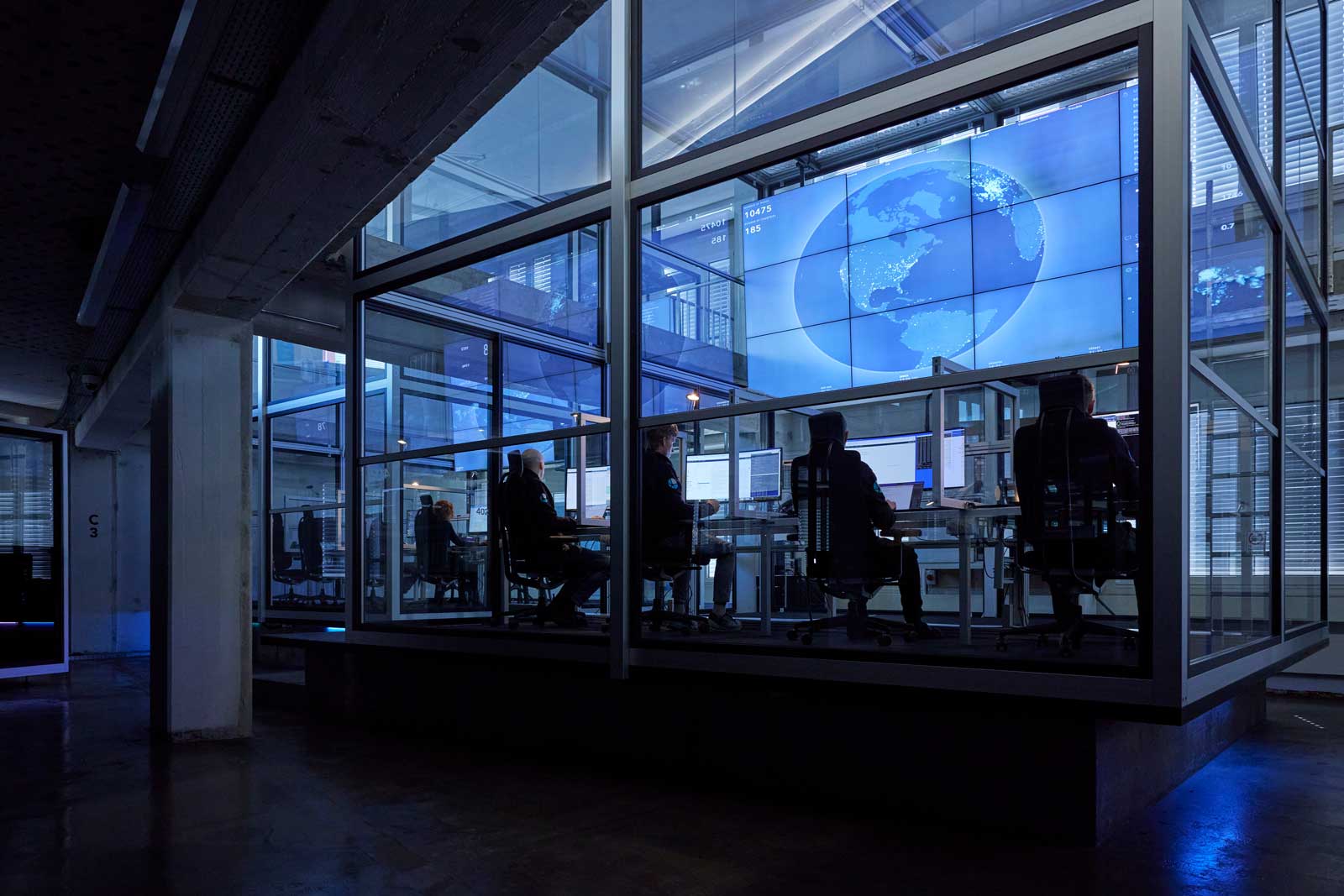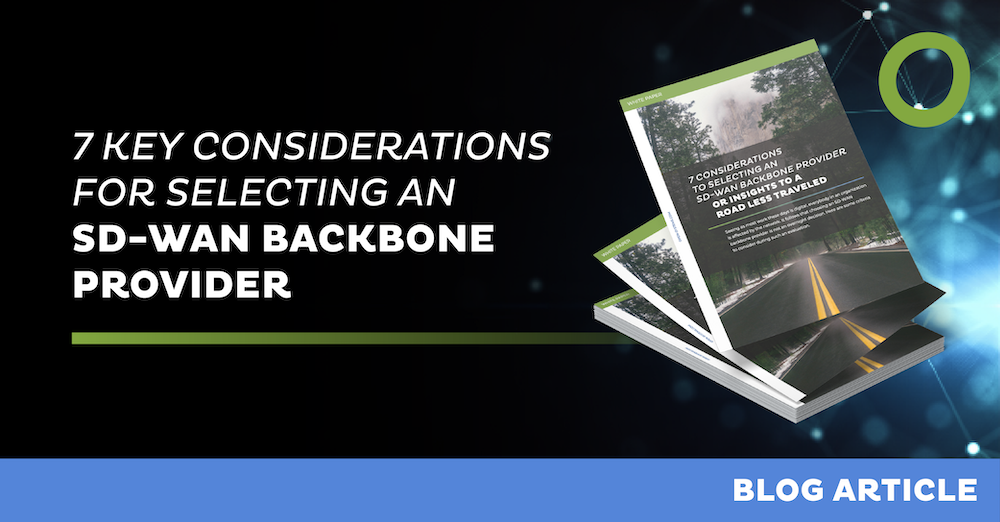
Global Network Transformation Statistics You Should Know
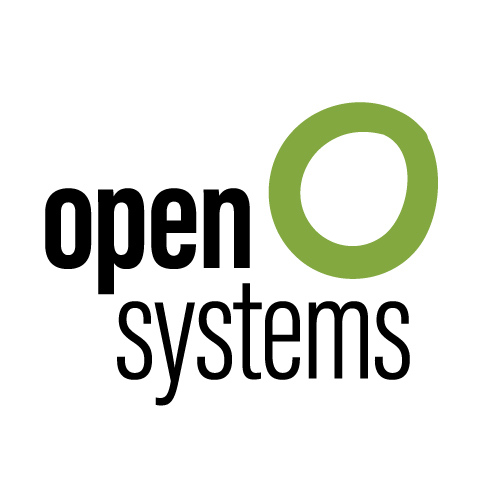

A Closer Look at Two IT Infrastructure Research Reports
As organizations navigate the evolving IT landscape, understanding global trends in IT infrastructure – in particular, network and security – is essential. Let's delve into key findings from two recent Open Systems reports: a survey conducted with companies from Germany and another from the United States.
For both reports, we asked 200 IT and security leaders from various industries about the current state, priorities and challenges they face around network transformation and Secure Access Service Edge (SASE). Additional insights about Zero Trust initiatives and goals are available in the German report.
Increased IT Budgets: A Global Trend
Both reports indicate a significant increase in IT budgets for 2025, driven by factors such as digital transformation, remote work, and heightened security concerns.
A remarkable 69% of respondents in Germany anticipate higher IT budgets, while in the US, the figure is even slightly higher at 71%.
While the overall trend is similar, there are regional nuances. In Germany, the manufacturing industry stands out with a particularly high expectation of budget increases, reaching 81%. In contrast, we see a correlation between company size and budget increases in the US, with larger organizations more likely to allocate greater resources to IT.
SASE Management: Outsourcing as a Trend
When it comes to SASE operations, there are differences between the two regions: While the US leans towards outsourcing SASE management, Germany shows a more assorted approach.
With 70% of surveyed companies outsourcing SASE management, this is clearly the preferred approach in the US. One of the reasons could be its cost-effectiveness: while 43% of organizations managing SASE internally expect significant budget increases, it is only 31% for those having SASE managed externally.
In Germany, there is a 50/50 split between companies that operate SASE in-house and those that outsource management to an external provider. Similar to the US, more than 70% of manufacturing companies plan to outsource SASE management in the future.
Outsourcing SASE Operations: Drivers and Key Characteristics
In the US, the vast majority (92.6%) of organizations would consider outsourcing SASE management if they couldn’t find skilled people to run the solution. The second most common reason for outsourcing was an external provider offering compelling financial and technical terms for managed services. Almost 75% of respondents also expressed interest in reassigning internal staff to other, more strategic initiatives, while delegating daily tasks to external providers.
German respondents rated numerous managed SASE service characteristics as important: 24x7 customer support, agility of services, a SASE solution from a single provider, technical integration capabilities with other systems and availability of the latest technologies. However, we estimate that the key criteria they are focusing on and optimizing in SASE management are largely determined by their experience with their current SASE operating model: for example, 24x7 customer support is less important for companies that already work with an MSP – only 71% of them rated it as important vs. 84% of those whose IT teams manage their SASE solution themselves. On the other hand, access to the latest technologies is noteworthier for SASE self-management IT teams – 89% see it as very important vs. 84% of those with an MSP.
Network Transformation: A Necessity
Another significant trend is network transformation, which is closely linked to SASE adoption. Organizations are investing in modernizing their networks to support digital initiatives, improve security, and enhance efficiency. Both reports emphasize the importance of network transformation as a strategic priority.
In the German survey, 80% of companies reported to have a network transformation project planned and a striking 95% of companies which expect a significant budget increase for 2025. The companies currently outsourcing their SASE management to an MSP are more likely to do a network transformation.
In the US, 81% of the IT leaders surveyed reported to have a network transformation ongoing. Among these organizations, 37% are planning for significant increases in their network budget over the next 12 months. By comparison, among organizations not pursuing network transformation initiatives, only 5% are significantly increasing budgets.
The most dominant drivers for network transformation are increasing cybersecurity (82.5%), improving bandwidth and performance (82%), and complying with regulations and standards (80%). The following drivers were significantly more prioritized for companies with expected budget increases: regulatory compliance (23% net difference), a shift towards cloud computing (23% again), and supporting larger digital transformation initiatives (20% net difference).
In addition to the drivers mentioned above, more than 80% of the German IT leaders surveyed also rated the network transformation drivers as very important: increase of IoT and IIoT devices in their network, their move to the cloud, supporting their larger digital transformation initiative, the increased number of remote and hybrid workers as well as reducing cost and improving cost efficiency. Also here, companies expecting an increased budget name better cybersecurity (13.5% net difference) – as well as improved bandwidth and performance (12.75% net difference) – more often than the other network transformation drivers.
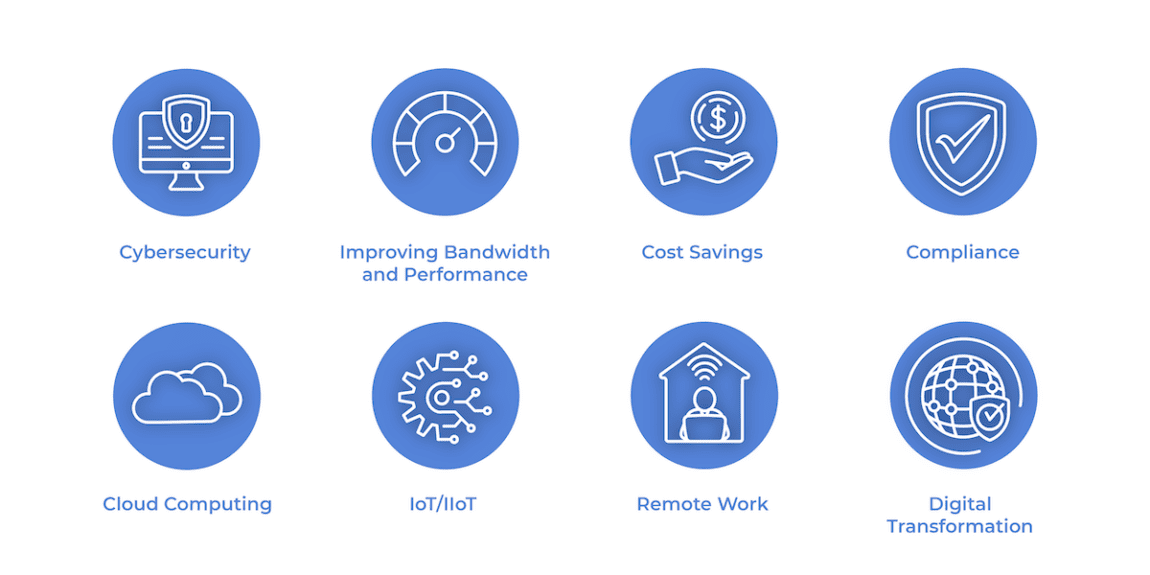
SD-WAN Adoption: The Kick-Start for SASE
Based on both reports, we see SD-WAN as being essential for companies to get started with their SASE transformation. Interestingly, companies which already have or are planning to adopt SD-WAN are expecting higher budget increases and are more likely to pursue a network transformation project.
If SD-WAN is already an integral part of the network transformation initiative, organizations tend to prioritize their expenses to keep it that way. US organizations that have already implemented an SD-WAN as part of their SASE strategy are placing a higher priority on their SD-WAN budget line item compared to those organizations in the survey that have not yet implemented SD-WAN.
Half of organizations that have not yet implemented SD-WAN technology as part of their SASE strategy are making the SD-WAN budget a “high” or “essential” priority in 2024 (52.7%) and 2027 (50%). This data suggests that widespread adoption of SD-WAN is imminent – we estimate that at least 84% of organizations will have an SD-WAN implementation by 2027. And 80% of organizations that have already implemented an SD-WAN also currently have a network transformation initiative underway. While some organizations will have had an SD-WAN before pursuing a network transformation initiative, it is likely that many are doing so within the context of this wider strategic plan.
In the German survey, only 43% of the respondents have already implemented SD-WAN. However, more than 80% of companies which are expecting budget increases for 2025 have an SD-WAN already.
SASE Implementation Challenges: Complexity and Limited Resources
Experiencing challenges and barriers during a SASE architecture implementation strengthens the intent to complete the initiative. As mentioned before, organizations spend more to break through the barriers rather than turning their tail and giving up.
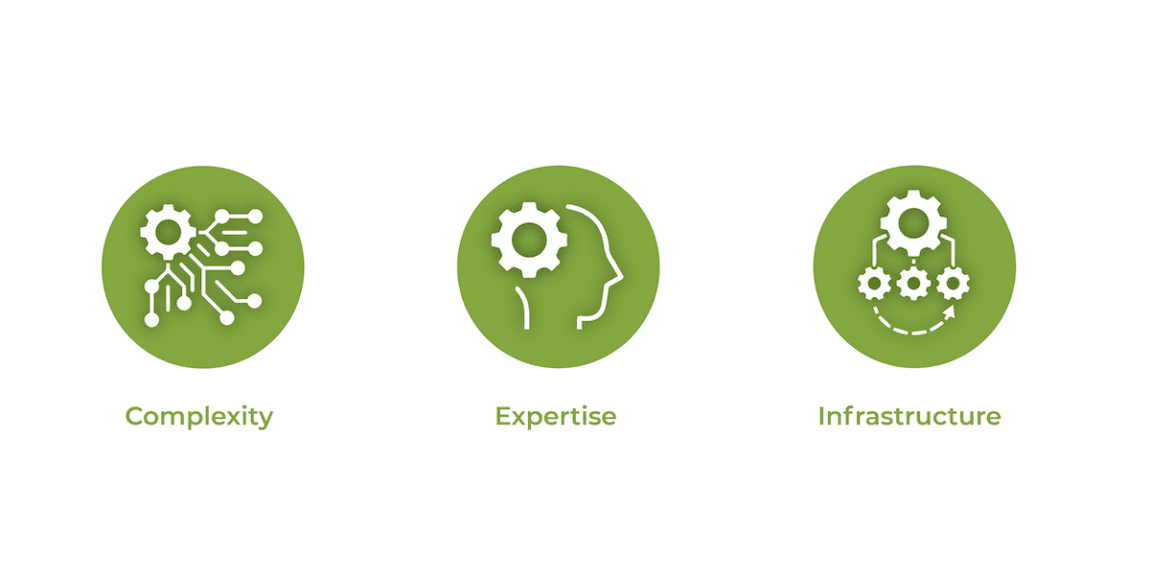
Globally, these are the main SASE implementation challenges:
- Complexity: Implementing and managing complex IT infrastructure, including SASE solutions, presents significant challenges.
- Infrastructure problems: Changing IT infrastructure technologies such as network routing or web policies can lead to instabilities and downtimes.
In the US, 64% of respondents who have faced serious infrastructure problems while implementing SASE are significantly increasing their budgets over the next 12 months.
On average, organizations experiencing SASE implementation barriers like “fear of the unknown”, infrastructure problems, limited budget, and ample complexity are twice as likely to significantly increase their budget rather than opting for a lower budget increment. More specifically, 70% of organizations managing SASE internally see complexity, limited budget and lack of expertise as main challenges.
In Germany, 48% of survey respondents mentioned complexity, 47% infrastructure problems and 45% lack of skilled people as main SASE implementation barriers. The challenge of limited skilled staff was mentioned more often by companies managing SASE internally than by those who outsource it to an MSP (53% vs. 31%).
Despite these implementation challenges, organizations are recognizing the benefits of investing in IT infrastructure. Organizations can position themselves for long-term success if they address these concerns proactively.
The global IT landscape is undergoing rapid changes, driven by technological advancements, evolving business needs, and increasing security threats. By understanding these trends and addressing the associated challenges, organizations can make informed decisions about their IT investments and future-proof their success.
Leave Complexity
Behind
To learn how Open Systems SASE Experience can benefit your organization, talk to a specialist today.
Contact Us